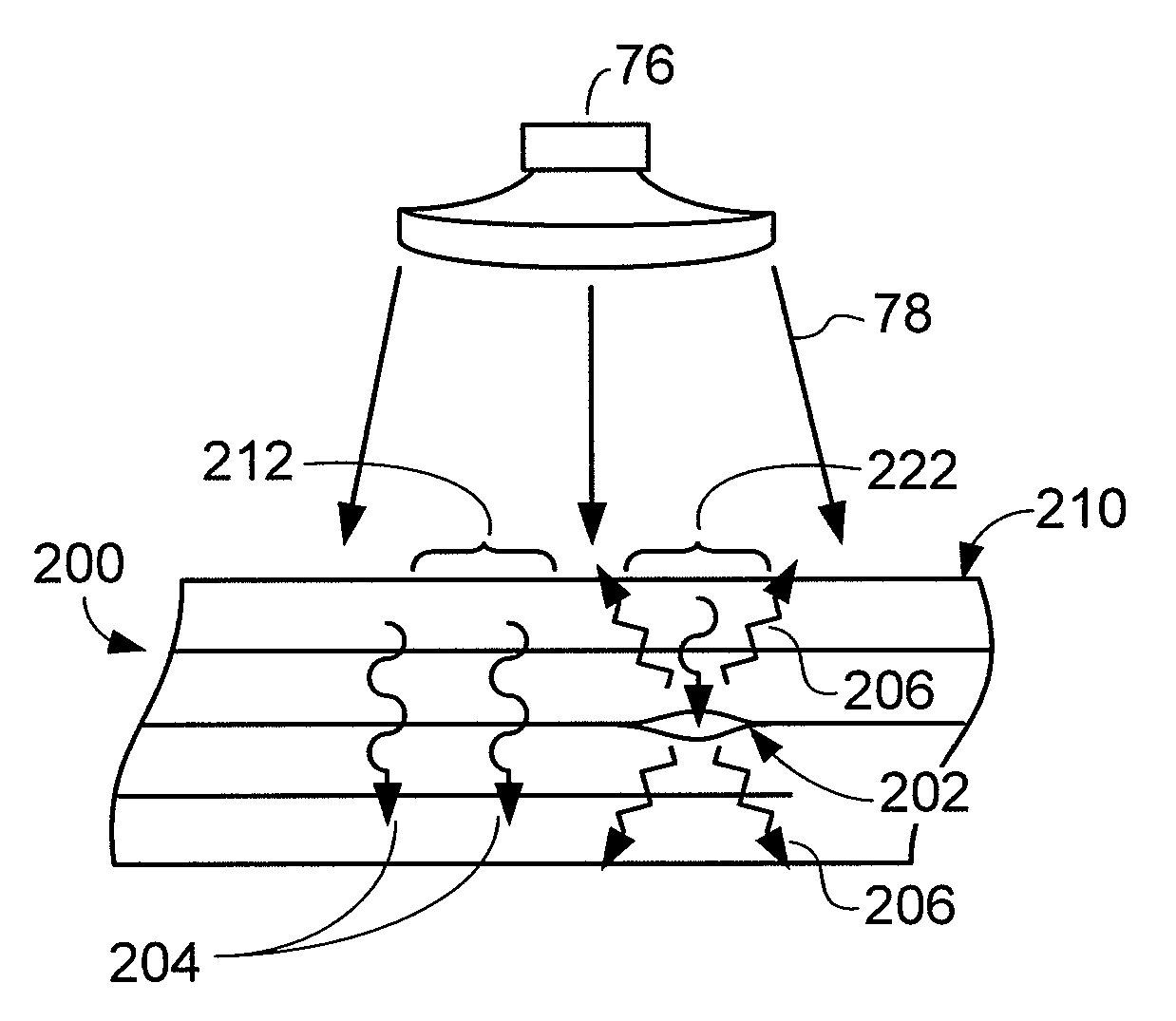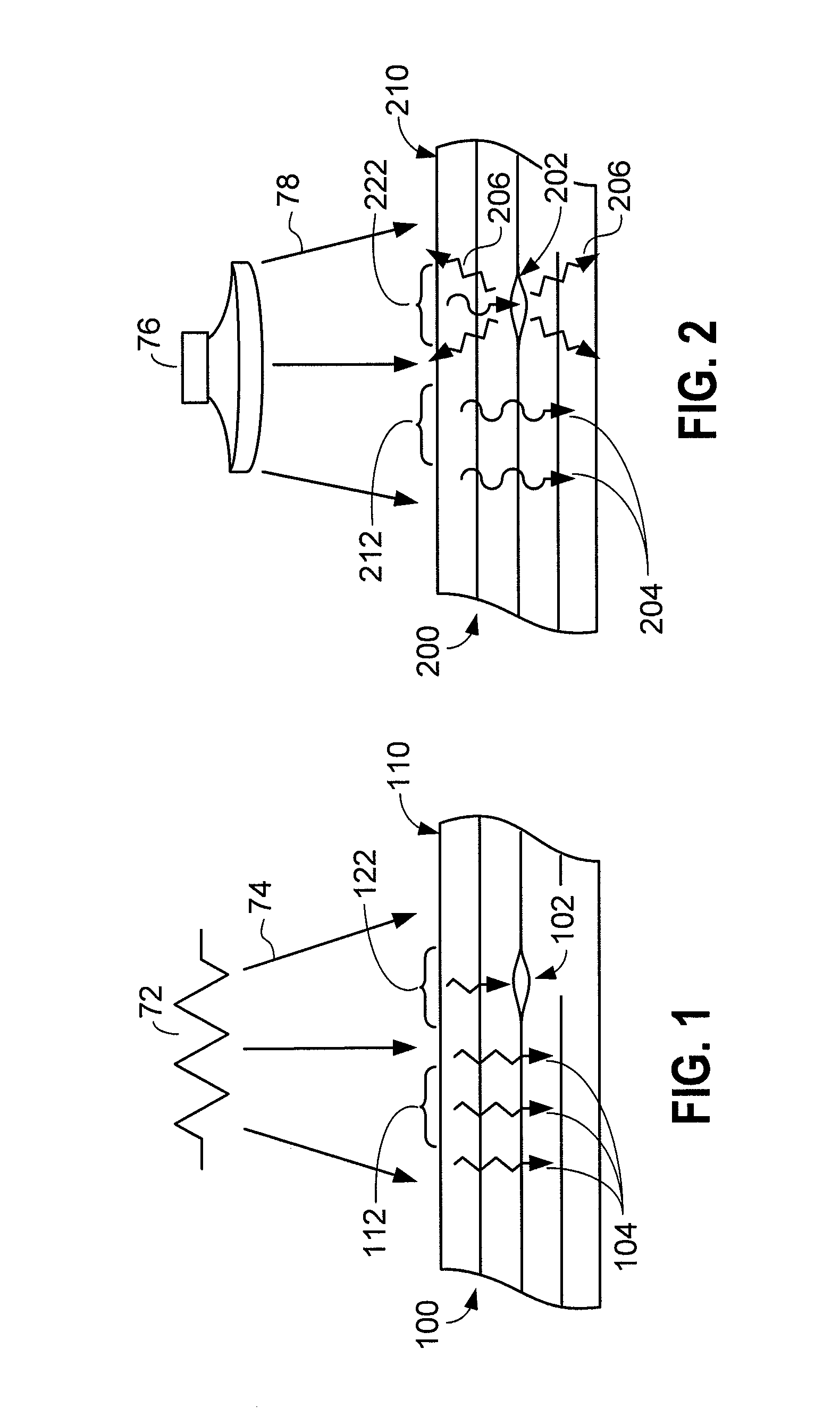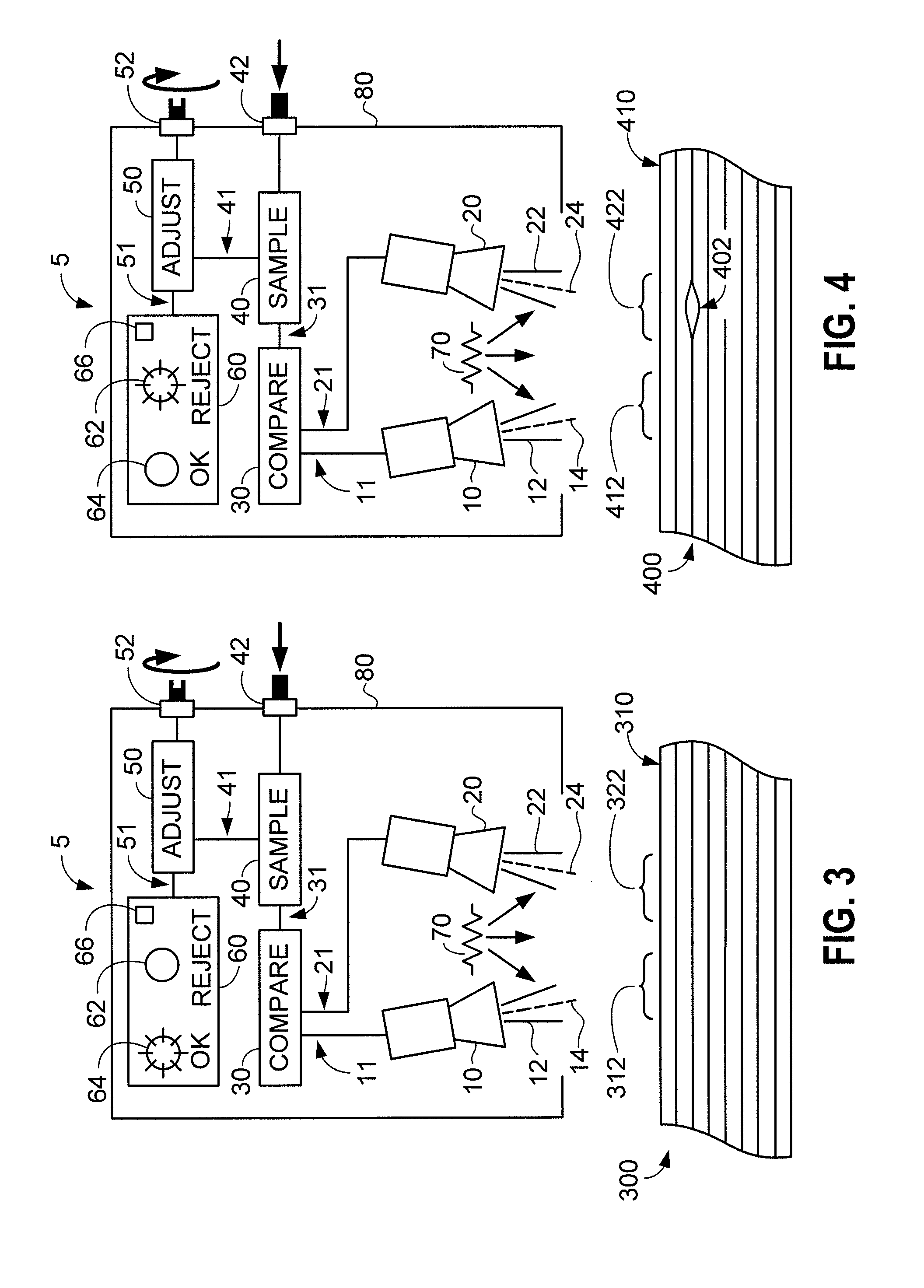Infrared ndi for shallow defect detection
a defect detection and infrared technology, applied in the field of infrared ndi for shallow defect detection, can solve the problems of high training cost, high equipment cost, and inability to detect sub-surface flaws in structures, and the cost of infrared cameras and technicians trained to interpret thermographic displays
- Summary
- Abstract
- Description
- Claims
- Application Information
AI Technical Summary
Benefits of technology
Problems solved by technology
Method used
Image
Examples
Embodiment Construction
[0018]One or more embodiments of the present invention now will be described more fully hereinafter with reference to the accompanying drawings, in which some, but not all embodiments of the invention are shown. Indeed, the invention may be embodied in many different forms and should not be construed as limited to the embodiments set forth herein; rather, these embodiments are provided so that this disclosure will satisfy applicable legal requirements. Like numbers refer to like elements throughout.
[0019]A theoretical approach to understanding the flow of heat into a structure, the production of heat within a structure in response to incident energy such as ultrasonic energy, and the production of temperature gradients on the surface of a structure by which sub-surface defects may be detected are described herein with references to FIGS. 1-2. Such descriptions are provided to promote an understanding of concepts underlying the developments of various embodiments of the invention. Em...
PUM
| Property | Measurement | Unit |
|---|---|---|
| diameter | aaaaa | aaaaa |
| diameter | aaaaa | aaaaa |
| diameters | aaaaa | aaaaa |
Abstract
Description
Claims
Application Information
 Login to View More
Login to View More - R&D
- Intellectual Property
- Life Sciences
- Materials
- Tech Scout
- Unparalleled Data Quality
- Higher Quality Content
- 60% Fewer Hallucinations
Browse by: Latest US Patents, China's latest patents, Technical Efficacy Thesaurus, Application Domain, Technology Topic, Popular Technical Reports.
© 2025 PatSnap. All rights reserved.Legal|Privacy policy|Modern Slavery Act Transparency Statement|Sitemap|About US| Contact US: help@patsnap.com



